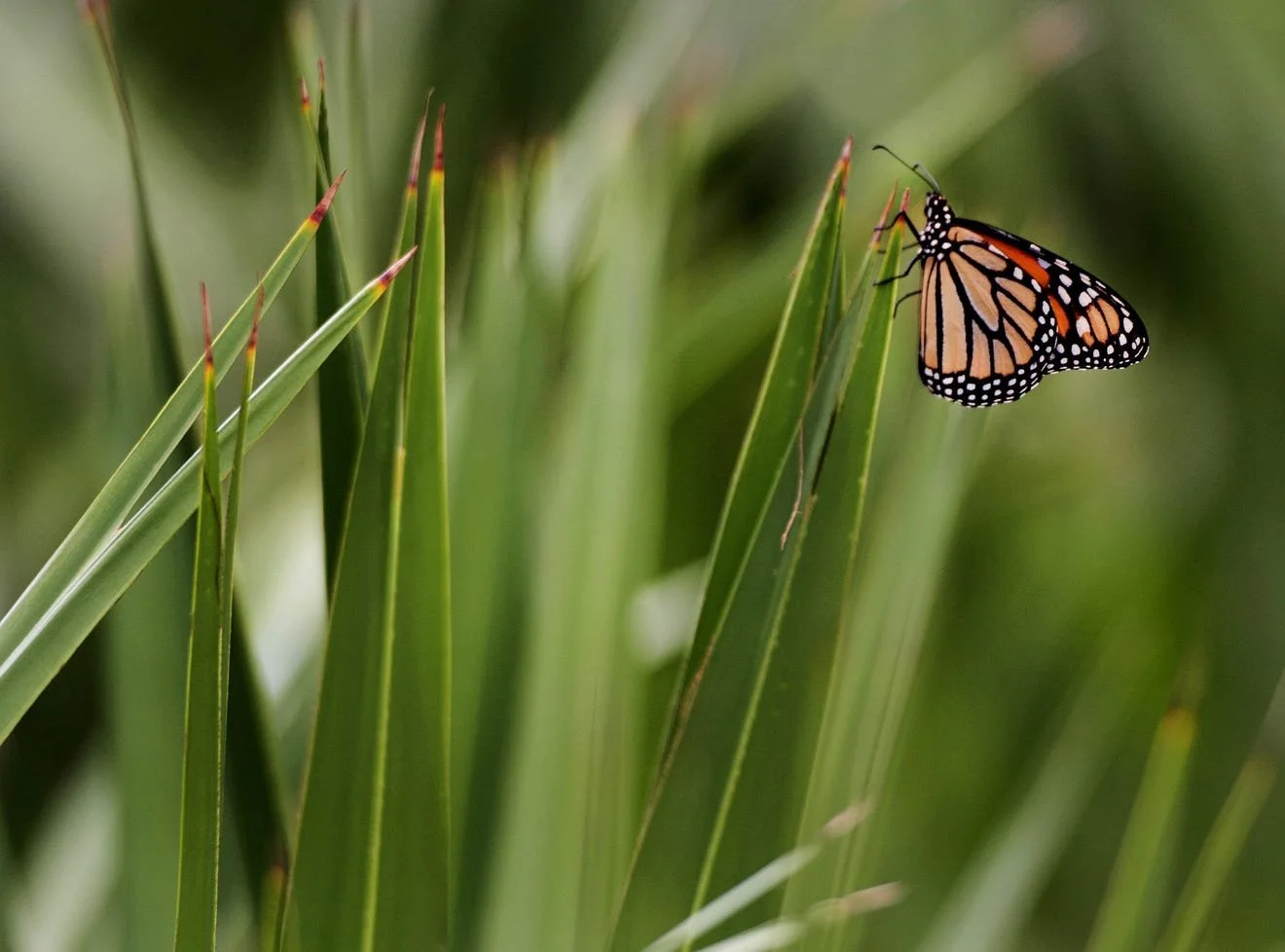Plant Native Gardens to Sustain Local Insects & Birds
January 27, 2019
The operative word is sustainability. Our Palm Beach tropical paradise will remain as such only as long as we allow and encourage healthy, biodiverse ecosystems to flourish. In creating our magnificent green landscapes, many of us have forgotten to maintain habitat for the original inhabitants, including our birds, butterflies and bees.
Coming from a farm in the Northeast, I grew up with the birdsong of hundreds of warblers, sparrows, chickadees, woodpeckers, doves, hawks, and countless others. Here in our manicured Palm Beach gardens, one is hard pressed to ever see or hear a bird! It has become increasingly apparent that the future of our birds and wildlife depends on our stewardship. Adding native plants to our gardens has never been of more vital importance. The beautiful ornamentals we have planted are almost always from another ecosystem in another country. While some of these have proven fine additions to our gardens, the vast majority cannot support the native insect herbivores that provide vital protein tor the birds and animals that live here.
Initially, this sounds wonderful: no insects, no foliar damage, no need to spray pesticides. But we forget that insects covert plant tissue into insect tissue and thus provide, in the form of themselves, food for a huge percentage of the world’s fauna. Fewer insects mean fewer or no animals in a given area. Nesting birds will forage an average of 50 meters from the nest to find food for their young. If there are no native plants supporting the insects and caterpillars within that area, the nest will fail.
Additionally, we cannot continue to wage war on our environment through overuse of chemical pesticides, herbicides, and fertilizers. These chemicals inevitably leach into our waterways and water supplies where they help fuel the red tides and algae blooms that have been so devastating to our beaches this past summer and fall. Of the 3 million tons of lawn fertilizer and 70 million pounds of pesticides we Americans use annually, the EPA estimates that 65 percent filter into lakes, rivers, and aquifers. Ultimately, we are drinking our own pesticides.
This is where native plants come into play. All plant foliage contains specific toxins that only certain insects can ingest, as these insects have evolved with enzymes capable of detoxifying those chemicals. Putting it more succinctly, our native insects cannot eat the foliage of alien species. The caterpillar of the monarch butterfly is an excellent example. This insect is a specialist on members of the milkweed family and can eat nothing else. If we eliminate all milkweed from our landscapes, we might as well kiss the Monarch goodbye. Our native White Oak, Quercus alba, will support 534 species of moths and butterflies while our non-native Clematis, after over a century of cultivation, will support only one.
By providing necessary food in the form of plants, we as gardeners can largely determine the species able to exist in our landscapes. To create functioning, sustainable living spaces, we must re-introduce the plants that started here. These natives are the only ones that can support the insects of this ecosystem, which in turn support all higher forms of life, including us. I am not suggesting replacing all our ornamentals; we could start by incorporating just a few of the beautiful natives that I will discuss in upcoming articles. We may be delighted with the resulting butterflies and birds we can bring back to our gardens.

